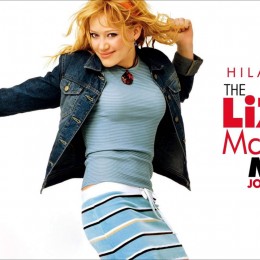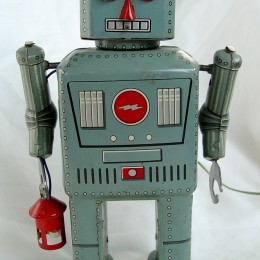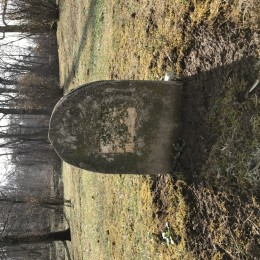EASTERN SET TO LAUNCH FOOTBALL PROGRAM
by Anthony Barr and Jordan Kolb
[media-credit name=”Google Images/The Waltonian” align=”alignleft” width=”260″] [/media-credit]
[/media-credit]
Last week, Eastern announced that on April 1 it will launch a new plan to develop a football program. Recruiting for the upcoming school year is already underway, and the program is expected to increase undergraduate enrollment by at least 11 percent. Those responsible for recruiting have been exploring unique recruitment strategies, such as the incorporation of a team Wawa budget. In addition to recruiting players, the University is also working to recruit a cheerleading squad to “Wake ^ the Crowd” at every game.
The announcement stirred a number of questions on campus, primarily about what the team name will be. Sophomore John Doe says, “I’m just, like, really concerned that it might be a bad idea to name our team after the Philadelphia Eagles. Their bad luck might rub off on us or something.” Other students expressed a keen interest regarding who the food provider will be for the home games. Junior Jane Doe says, “I’m just really worried that if Meatless Monday applies to the food stand, I won’t be able to eat chicken tenders while I watch the games.”
Some students (and many alumni) have expressed excitement about how having a football team will build school spirit, especially in light of the administration’s hope that football games may allow students to bond with their Student Success Advisers. However, students have expressed concern about having limited space for tailgating, given the lack of parking space on campus.
The plan includes the building of a football stadium on campus, leading some students to wonder if Eastern would finally level Kea-Guffin hill. However, according to the Campus Sovereign Strategy, the stadium is slated to be put in the most central place on campus, since it is likely to create a hub of student activity. According to the announcement, it will be “between Walton and the softball field, next to McInnis, so that students can view games from classroom windows.”
Students have questioned how this may affect the noise level in Warner Library. According to representatives from administration, this will not be an issue, as the library will no longer be in operation. When pushed further, this clarification was given: “Recent student body surveys have indicated reluctance from students about turning the main floor of the library into a learning commons. The survey found that only 87 percent of students use the library on a daily basis, which was deemed insignificant. Based on this response, we have determined that the most efficient route of action will be to eliminate the existing structures to make room for the new facilities.”
A number of rearrangements are in store in order to accommodate this plan. A plan entitled “Operation Diaspora” is underway, through which books currently housed in Warner Library will be placed on permanent Interlibrary Loan and circulated among colleges in the tri-state area. In response to student queries about where to find quiet study space on campus, students are advised to find the nearest Starbucks and purchase a pair of noise-cancelling headphones. As the purchasing of such headphones may be a financial burden on some students, the University has partnered with Beats to provide students high-quality headphones at a discounted rate.
WHEN IN ROME
by Meganne Beach
[media-credit name=”Google Images/The Waltonian” align=”alignleft” width=”260″] [/media-credit]
[/media-credit]
Studying abroad in Rome, Italy was like living in a movie. The last entry of the journal I kept abroad was simply titled, “This is what dreams are made of.” I was so excited to celebrate my new maturity and independence, and I hoped to live it up in one of Europe’s most fabled cities. But fate had something more spectacular in store for me. It happened during one of our excursions to the Trevi Fountain: an Italian pop star approached me and mistook me for his estranged singing partner, Isabella!!! Crazy, I know. I was star-struck by the dark and handsome singer—can you blame me?—and I was swept up in Paolo’s world of Vespas, fashion designers and lip-synching, neglecting my best friend Gordo who was willing to get kicked off the trip to protect me.
The best advice I’ve ever received came from my look-alike, Isabella, and I want to share it with you in case you ever fall in love with a sketc≠hy Italian pop star like I did: “Who are you going to believe: this boy you are knowing your whole life, or this boy you are just meeting who says, ‘You shine with the light from the sun?’” Retweet.
In the end, I had the time of my life—an Italian fling, reconciliation with my enemy, Kate, and the most romantic kiss of my life.
BILL BOT
by Jared Maier
[media-credit name=”Google Images/The Waltonian” align=”alignleft” width=”260″] [/media-credit]
[/media-credit]
Everyone knows Bill. He’s a smiling, caring and friendly guy. He enjoys scanning students’ e-cards and letting them partake in the joys of their daily sustenance. Yes, Bill is a great human, or is he?
My recent findings will change the way we see our beloved Bill. One late night in the Dining Commons, I stumbled upon Bill standing next to an outlet. At first it appeared he was charging his music speakers, but closer investigation revealed he was charging himself. Yes, students of Eastern University: the kind-hearted and generous Bill we all know and love is in fact a robot.
Upon discovering this information, I requested an interview with Bill. To my surprise, he happily agreed. We spoke for a while about his robot body functions. This is some of the information I learned.
The back of his head opens up to reveal an extendable electric cord, which he uses to recharge his batteries. He has to plug himself in for four days, and then he has enough charge to work for two to three days. Clearly he needs a better method for charging, but it does explain why students only see him on the weekends. His eye receptors have not been functioning as well as they used to, and his ears are only on his body for physical likeness. They do not have any function. He listens to people through sound receptors in his nose, which is why he often leans his head back when he is speaking with someone. He has the ability to eat food, but he cannot tell the difference between their different tastes and textures. Perhaps this is for the best, considering he works for Sodexo. He is also from outer space.
Yes, this caught me by surprise as well. Bill even mentioned it, as if it were not a big deal. He just casually stated, “Oh, I’m from Alpha Centauri,” and then he continued talking with his usual chipper manner. He said he has come to Earth to research humans. He landed on Eastern’s campus about 10 years ago and found that the best way to perform his research was to meet everyone at the Dining Commons. The photos he takes with students are transmitted to his robot friends in space. The same with his daily music selection: his songs are chosen to reflect a collection of human thoughts on other humans. After hearing all of this, I was curious as to what he thought of our species, so he showed me one of his recent reports.
Here is a rough translation of his report: “This year’s findings: humans are fond of smiles, humans still enjoy eating food, humans like meaningful interaction with other humans, humans are beautiful, humans are joyful, humans are friendly. This campus is home to some of the greatest people I have ever met. I am glad I landed here at Eastern University.”
I know I speak for everyone on this campus when I say, “We’re glad you landed here too.” Please consider this article your official “welcome to Earth from us, the students of Eastern University!”
THE LOST TREASURES OF WALMARTHON
by Russel Risden

Legend has it that while George Washington was at nearby Valley Forge he visited the village of St. Davids. However, this is not your typical “George-Washington-slept-here story.” With the British in nearby Philadelphia, Washington sought to preserve the important documents and paintings that had been evacuated from Philadelphia when the British marched into the city on Sept. 6, 1777. Washington charged his aid, Major Thomas Walker, to find a safe area to store these precious items. With Washington in town, Walker stayed at the old Fenimore homestead that once stood on a section of what is now the main campus of Eastern University. Walker at once noticed that the Fenimore House’s cellar was large enough to accommodate the massive collection, which included Thomas Jefferson’s handwritten draft of the Declaration of Independence and correspondence letters between the Continental Army and Congress. In the midst of a December snowstorm, Major Walker placed the collection in trunks, locked them and buried them beneath wood and coal in the Fenimores’ cellar.
Sworn to secrecy, Major Walker returned to Valley Forge to what was then the more important task of reorganizing the ragtag army. Meanwhile, the British sent patrols to St. Davids to gather intelligence about Washington’s activity. On the night of Feb. 1, 1778, they knocked on Mr. Fenimore’s door. The British captain questioned the elderly farmer, and being the staunch patriot that he was, Mr. Fenimore would not give any information. The discussion got heated. A neighbor who was passing by at the time recorded Mr. Fenimore’s famous line, which echoes in the halls of liberty to this day: “I’d be damned if I tell you anything,” which was followed by, “You can go to the Devil!” The British soldiers forcibly entered the house and seized anything of value: silverware, plates and farm tools. The 85-year-old Mr. Fenimore was forced to go with the captain, leaving his family’s homestead for the last time. Although it is not known how he met his end, he never returned to his house from the British camp. Major Walker, the only other man to know what was in Fenimore’s basement, was one of the few casualties of the Battle of Monmouth in 1778—and he took the secret with him to his grave.
After the war, search parties and treasure hunters searched Montgomery and Delaware Counties, ripping apart barns and houses. There was even one report of a scavenger digging a hole in the middle of Lancaster Avenue, which, as one could imagine, caused many broken carriage wheels. However, as the years passed the story of the “lost treasures of Philadelphia” became known as a myth, and eventually, like many myths, it was forgotten. That is, it was forgotten until 1913. At that time, Philadelphia philanthropist Charles S. Walton Sr. bought much of the Fenimore land, including the ramshackle homestead that Mr. Fenimore had so valiantly defended. Mr. Walton brought in architects to evaluate the feasibility of stabilizing the circa 1700 structure. They reported that it was quite possible to save it; however, termites had caused significant damage: the foundation could be saved and some of the timbers, but the majority of the structure had to be replaced.
Upon hearing the news, Mr. Walton thought back to when he bought the property: its only remaining tenant from the Fenimore days was an elderly groundskeeper, who kept telling him that the house had played a significant role in the Revolution and that Washington had even slept there (which was false—it was Walker who had actually slept there). Mr. Walton, a firm believer in the preservation of history for future generations, hired a historical preservationist to see the restoration of the homestead. Except the restoration was never finished.
As the work began on the homestead, Mr. Walton was nearing the completion of the rest of the estate, which he renamed Walmarthon. He traveled extensively throughout Europe and collected tapestries, period furniture and paintings by Raphael, Vermeer and Rembrandt. In the society pages of the Philadelphia Inquirer reports began circulating of the massive European collection that was being amassed at Walmarthon. Except no one actually saw the treasures.
On Dec. 26, 1916 the Main Line’s well-known champion of justice and lost causes passed away. Mr. Charles Walton was dead at 54. Not even a week later, questions and rumors traveled throughout Philadelphia: “What would become of his collection?” and, “When would it be sold?” Except there never was an auction, and those who visited the estate to pay their respects saw no Raphaels, no Vermeers and no Rembrandts. What had become of Mr. Walton’s collection?
Reports began trickling in about the “lost treasures of Walmarthon.” Even though the family denied that there had ever been a collection to begin with, curious reporters and treasure hunters once again combed the estate, just as they had over a century before. However, shortly thereafter, the U.S. entered World War One, and the rumors of a treasure on the Walton property disintegrated quickly as the country became enthralled in war.
Without Mr. Walton to oversee its reconstruction, the old Fenimore homestead quickly continued its rapid demise. People would often pass it along Eagle Road, remarking that it was such a shame that the historic structure was in a pitiful state. But that’s all that was ever said, and no one did anything to save the place where Mr. Fenimore had made his last stand.
When Eastern bought the Walmarthon estate in 1952, the Fenimore homestead was shortly thereafter razed, due to fire hazards and the termites. However, the old Pennsylvania sandstone foundation was not removed, and the cellar of the house was just backfilled with dirt, without anyone bothering to explore the structure for historical contents. Unfortunately, no one took pictures of where the house stood, and besides the occasional recollection of an older person, few can even recall the name of Fenimore or his house. However, when Eastern was building Sparrowk Hall in 2001, a mysterious clue from the past was discovered: a stone marker in the shape of a headstone. Historians and treasure hunters once again made their way to the old-estate-turned-college campus. An article was discovered in the annuals of the Main Line Times from the mid-19th century that referenced Mr. Fenimore’s death. Historians asked themselves what had caused Fenimore to be so outraged at the British. Could it be that, after all, he was guarding something that was sacred to his newly-founded country? Was his death not in vain after all? Or, better yet, was this the marker for an even-greater treasure–did the art collection that supposedly never existed, really exist?
Except nothing was found near the headstone that to this day lies adjacent to Sparrowk Hall. Many have tried to locate the original Fenimore homestead, but to no success. In fact, there is no record in the University’s history of such a structure, besides an obscure reference in an old deed. Walton Hall and the adjacent buildings have been explored to no avail. And the collection that supposedly held paintings from the “old masters”—Raphael, Vermeer and Rembrandt—was never found.
Author’s Note: The author would like to acknowledge that this could serve as an analogy for the care of old buildings and historic preservation.
*This is the Waltonian’s Satirical Centerspread for April Fool’s Day. All information is false.*

